Brown staining of the teeth is fairly prevalent. People can frequently avoid or remove them by changing their lifestyle or improving their dental health.
The hue of these dots might range from yellowish-brown to black-brown. The shape and size of the object might vary. Some people may detect blotchy patches, while others may perceive brown lines.
This article will look at what causes discolored patches on teeth. We also discuss how to prevent and eliminate teeth stains.
What is the reason for tooth discoloration on teeth?
A variety of factors can cause brown patches and other discolorations. They are as follows:
Tobacco Products
Tobacco is a common cause of tooth surface discoloration. Nicotine may be present in a variety of tobacco products, including:
- Cigarettes
- Chewing tobacco
- Cigars
- Pipe tobacco
Certain food and drinks:
- Coffee
- Tea
- Red wine
- Cola
- Blueberries
- Blackberries
- Pomegranates
- Tomato sauce
Tooth decay
Tooth decay occurs when the strong outer coating of your teeth, known as tooth enamel, begins to dissolve. Plaque-containing bacteria is continually growing on your teeth. Bacteria make acid when you consume sugary foods. If plaque is not removed from teeth on a regular basis, the acid tears down tooth enamel. As a result, dark stains and cavities appear.
The degree of tooth decay varies. It's a typical cause of dark patches on teeth when left untreated.
Tartar forms when plaque is not removed on a regular basis and hardens into tartar. Tartar can be yellow or brown in appearance and occurs at the gum line. Poor oral hygiene often leads to plaque and tartar build up.
Fluorosis
Water fluoridation preserves teeth, but too much fluoride can induce dental fluorosis. This commonly happens in youngsters as their teeth are developing beneath the gum line.
Fluorosis is often minor and manifests as white, lacy patterns. When the condition is severe, the tooth enamel pits, and dark stains form. Severe fluorosis is quite rare.
Celiac disease
Celiac disease can cause a variety of dental issues. Celiac disease-related dental enamel abnormalities affect permanent dentition. They include tooth discoloration (white, yellow, or brown spots on the teeth), enamel hypoplasia, pitting or banding, and mottled or translucent-looking teeth.
Swimming in a Pool
When competitive and recreational swimmers spend more time at the pool, they may develop brown stains on their teeth. The discoloration is considered to be caused by chlorine or other components of the pool water.
If your children swim, you may not notice any discoloration on their teeth until the end of the summer. However, for year-round swimmers, the buildup may accumulate every several months.
Supplements and vitamins
If you or your child is taking multivitamins, you may see a "black line stain" gradually appearing. This form of stain does not affect everyone, but it does impact a small percentage of the population.
Typically, blackline stain builds along the gum lines, resulting in a dark brown or black residue.
Recreational Substances
Recreational drugs and vaping can leave a dark stain on your front teeth. Marijuana, for example, is known to cause more greenish-colored stains and to be harder on your top front teeth due to how individuals hold the joint.
The more frequently you take recreational drugs, the more stains you'll see on your teeth. Keep in mind that smoking and drug use can both raise your risk of dental decay (which may look like brown stain.)
Hypoplasia of the tooth enamel
Teeth with less enamel than required can be caused by genetic or environmental reasons. This is referred to as enamel hypoplasia. Vitamin shortages, maternal sickness or malnutrition during pregnancy, pollutants, and other factors can all contribute to it. Enamel hypoplasia can affect one or more teeth and is characterized by rough-textured, brown or yellow patches.
Root canal therapy
A root canal is required when the pulp of one of your teeth dies. A tooth that undergoes this surgery may become and remain brown. This is due to the dead root darkening and infiltrating the tooth.
Trauma
A tooth's nerve can be damaged by trauma to the mouth. As a result, the tooth may develop dark patches or turn entirely brown.
Previous dental work
The deteriorating metal, silver, or white fillings can discolor teeth over time. White fillings can sometimes develop surface stains, giving the teeth a brown appearance.
Medications
Teeth can be stained by antibiotics such as tetracycline and doxycycline (Monodox, Doryx). This is especially likely to happen in children who have teeth that are still growing. It can also affect children if their moms used these drugs while pregnant. Glibenclamide (Glynase), a drug used to treat persistent neonatal diabetes mellitus, has been linked to brown patches on teeth.
Mouthwash containing chlorhexidine
This prescription mouth rinse is used to treat gum disease. Brown patches on the teeth are a possible adverse effect.
Gluten intolerance
Celiac illness can produce dental enamel abnormalities, such as brown patches on teeth. Brown stains on teeth are prevalent among patients with this illness, particularly children.
Aging
Teeth may discolor or become patchy as people age. This can be induced by a number of variables that accumulate over time, such as:
- Surface discoloration from staining foods or tobacco
- Darkening dentin, which surrounds each tooth and is the layer beneath the tooth enamel
- Weakening enamel
Genetics
The color of one's teeth varies from person to person and may be inherited. Some people have naturally white teeth, whereas others have somewhat yellow or brown teeth. Other hereditary abnormalities generate dark patches on teeth, such as dentinogenesis imperfect.
Treatment of tooth discoloration
Brushing teeth with baking soda and water may aid in the removal of stains produced by food and drink.
The optimum therapy will be determined by the reason of the dark spots on the teeth.
The home methods listed below can remove stains produced by meals, beverages, or lifestyle behaviors like as smoking:
- Every few days, brush your teeth with a baking soda and water combination.
- Rinse your mouth with a weak hydrogen peroxide solution or mouthwash daily or every few days. Afterward, always rinse your mouth with water.
- Tooth discoloration can be removed with a variety of over-the-counter treatments. There is no assurance that a person will experience effects within 1-2 weeks.
Tooth discoloration can be removed with a variety of over-the-counter treatments. There is no assurance that a person will experience effects within 1-2 weeks.
Among the over-the-counter possibilities are:
- Hydrogen peroxide-containing mouthwashes and rinses
- Toothpaste using sodium hypochlorite for whitening
- Carbamide peroxide-containing whitening strips
- Tray bleaching methods using carbamide peroxide bleaching gel
If the discoloration is caused by tartar or medical issues, the patient should see a dentist.
Tartar and plaque will be scraped, blasted, or rubbed away from teeth by a dentist or dental hygienist using tools. Minor operations to whiten teeth and prevent them from additional deterioration may also be performed by a dentist. Bleaching and topical fluoride application are two examples.
Celiac disease causes permanent tooth discoloration. The majority of stains and spots caused by fluorosis or tooth decay are also irreversible.
A dentist may be able to conceal or prevent additional deterioration of permanent or stubborn brown stains on the teeth with:
- Composite white fillings
- Dental veneers
- Crowns
- Dental bonding
They may also advise you to wear a night guard or retainer.
Keeping brown stains off your teeth
Taking care of your teeth will keep them bright, white, and free of stains. Brush after each meal and floss once a day.
Stopping smoking is one of the finest things you can do to keep your teeth (and the rest of you) healthy.
It's also critical to keep track of everything you eat and drink. Brush your teeth after eating or drinking anything that can discolor them. Also, include calcium-rich items in your diet. Calcium can aid in the prevention of enamel erosion.
Sugary meals and drinks, such as hard candies, soda, and desserts, should be avoided. Simple carbs, such as potato chips and white bread, are converted into sugars in your body and should be avoided.
Frequently Asked Questions
What is the prevalence of brown stains on teeth?
While no one knows how many of us have discolored teeth, it's apparent that we care about how healthy and white our teeth are. Nowadays, a bright smile is seen as a social status signal, making whitening goods and procedures more popular. According to the American Academy of Cosmetic Dentistry, most of us (99%) regard our smile as our most essential social attribute.
A quick walk down any drugstore dental care aisle shows a plethora of whitening trays, strips, toothpastes, and mouthwashes. We are putting our money where our mouths are more than ever before, spending more on both over-the-counter and professional whitening products and procedures each year. If you want to whiten your teeth, there are solutions for every budget — but it's important to know which are safe and effective — and which may cause more harm than good.
Do at-home teeth whitening solutions actually work – and are they safe?
Yes, they work as long as they are used according to the directions. Overuse of any teeth whitening product can cause gum irritation and sensitive teeth. It's normal to want to attempt at home whitening. According to the American Dental Association teeth whitening is safe as long as it's done in moderation.
Will fruit stain my teeth?
Fruit is delicious, but not all fruits are good for your teeth. Certain fruits contain citric acid, which should be consumed sparingly since it erodes enamel. If a trendy magazine suggests to use something naturally acidic (such lemons, oranges, or apple cider vinegar), skip it and reserve it for eating or cooking. Prolonged citrus exposure is like immersing your teeth in an acid bath, and will only erode enamel. Enjoy citrusy foods in moderation and brush your teeth afterwards.
Is baking soda safe?
According to research published in the Journal of the American Dental Association, baking soda isn't the most effective whiten teeth. Baking soda is an abrasive ingredient that can wear away the enamel that is necessary for white teeth to be healthy. If you lose too much enamel, the porous yellowish dentin's second layer will be exposed. This can turn your teeth yellow and make them more susceptible to stains and cavities.
Are there natural ways to whiten my teeth?
Oils and spices have appeared online and in periodicals, promising to naturally whiten your teeth. Unfortunately, the American Dental Association states that there is no evidence that turmeric will make your teeth whiter, nor that "oil pulling" (swishing coconut oil in your mouth) would make your pearly whites any whiter. You should save both for culinary purposes.
Summary
Brown stains are frequently caused by poor dental hygiene, smoking, or consuming dark foods that stain teeth.
Spots on the outside of the tooth are frequently removed and are simple to avoid. Brown spots on the teeth might occasionally indicate a medical issue. They might also be drug adverse effects.
If brown patches are accompanied by additional symptoms or do not respond to over-the-counter medications, seek medical attention.
When a person is unclear about the source of discoloration, it is a good idea to consult with a dental professional and practice good oral hygiene.
















































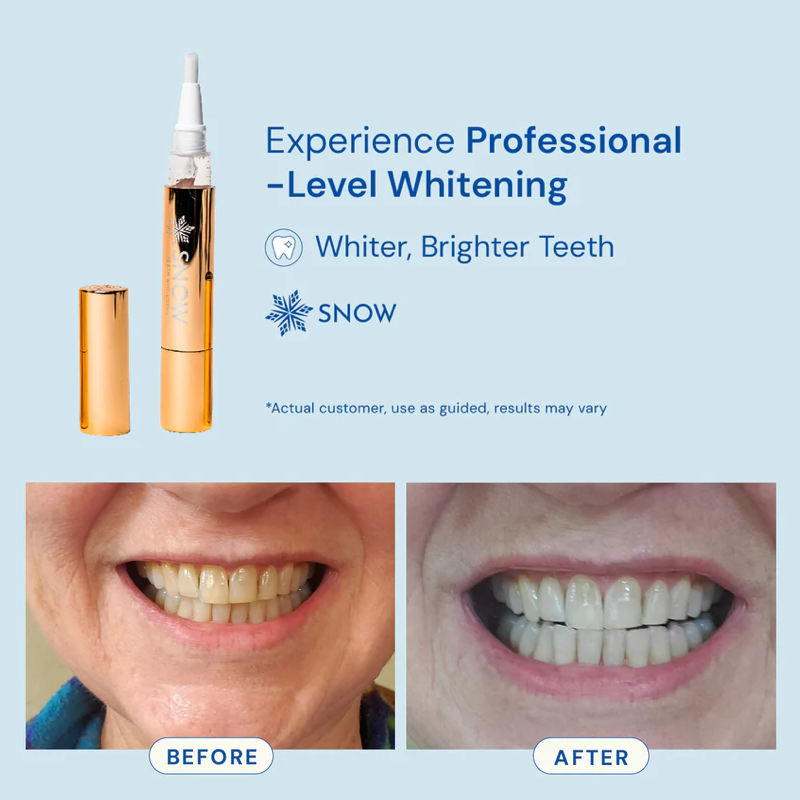



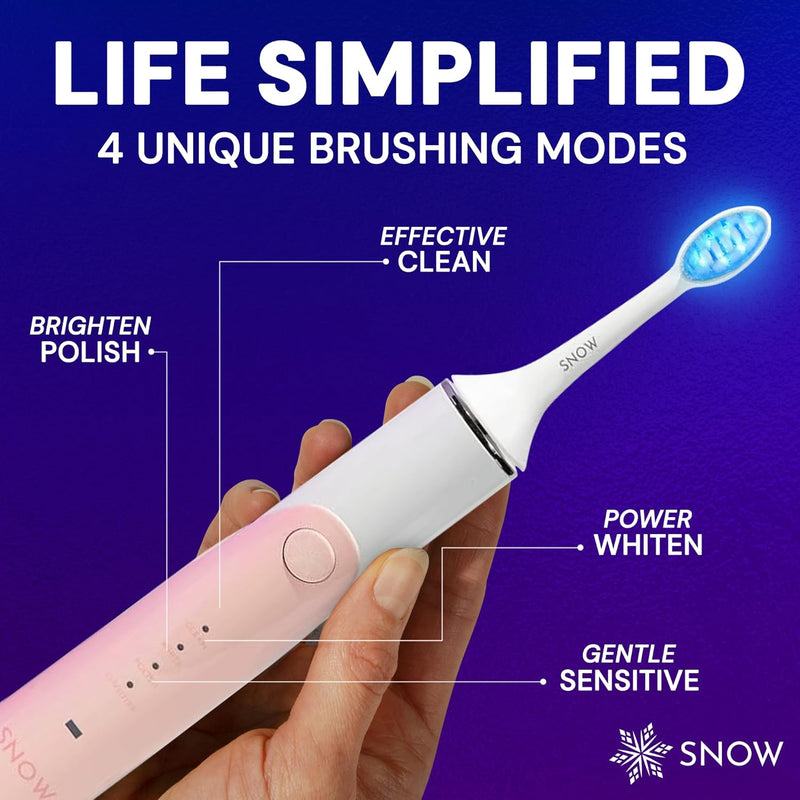

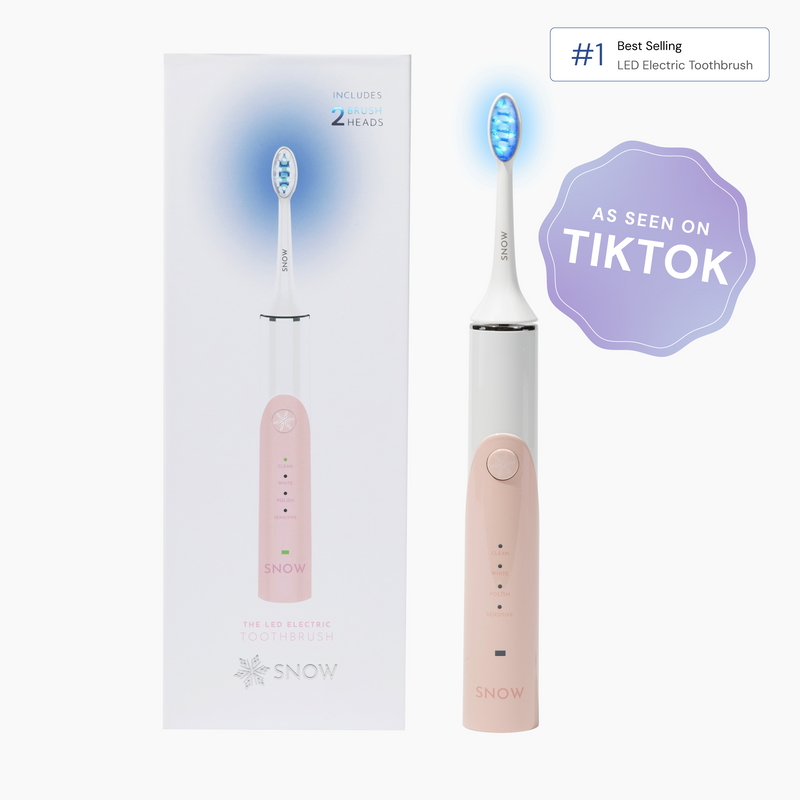


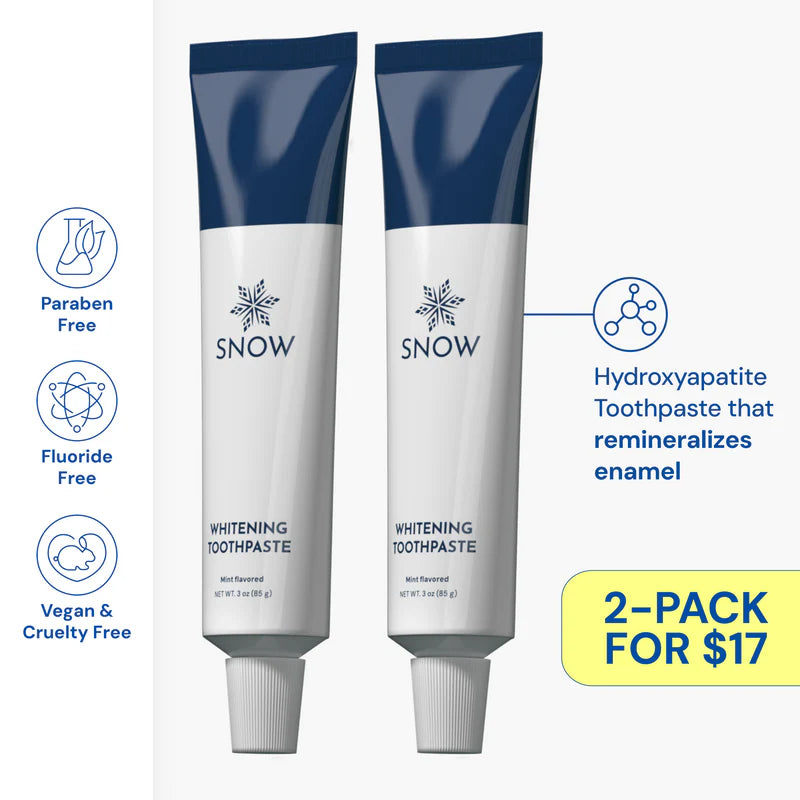
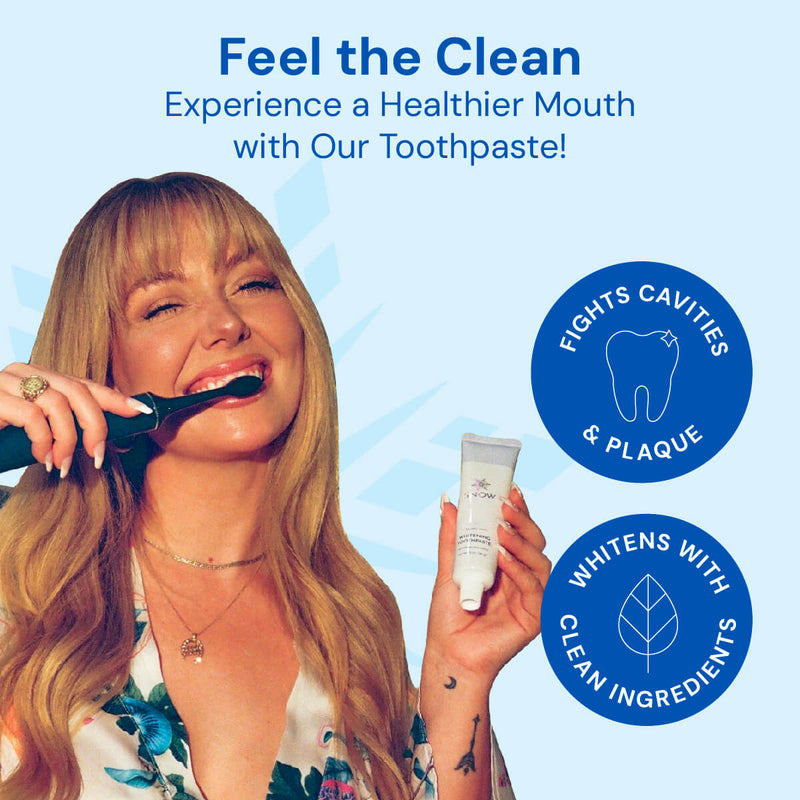









![Should You Brush Your Teeth Before or After Breakfast? [A Science-Based Answer]](http://www.trysnow.com/cdn/shop/articles/should_you_brush_your_teeth_before_or_after_breakfast.webp?v=1765142470)


